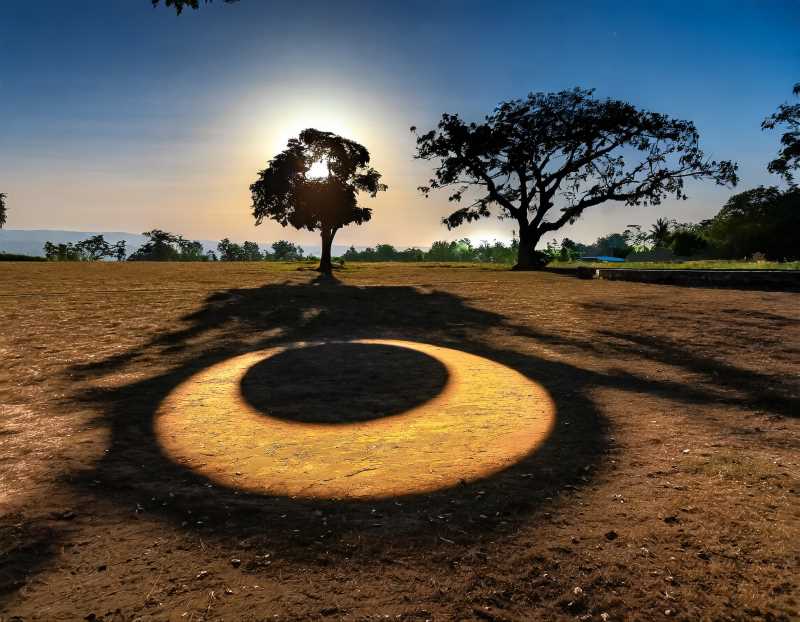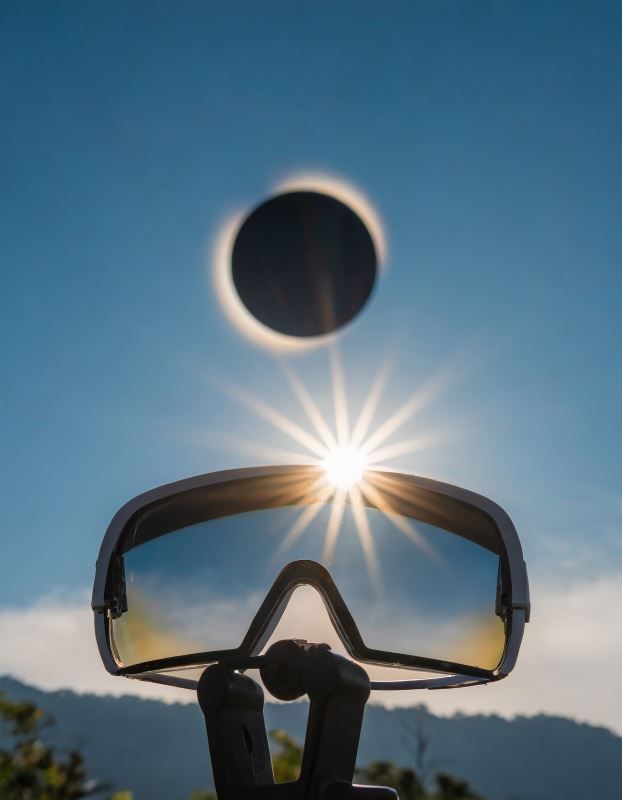How to Safely View Solar Eclipses Without a Sunburn
Eclipses are cosmic spectacles, but staring at the Sun is like using your eyes as magnifying glasses. Protect your peepers with certified filters, or enjoy the show via tree shadows or a box with a pinhole. Your eyes, and the wonders of the universe, are worth it!

In the grand celestial theater, few events captivate our attention as effortlessly as a solar eclipse. It's like a cosmic game of peek-a-boo between the Moon and the Sun, with Earthlings playing the role of awestruck spectators. However, before you embark on this cosmic adventure, there's something crucial you need to know: Our eyes are like magnifying glasses, and staring at the Sun during an eclipse is like focusing sunlight on your retinas. Ouch!
Enter Professor David Lozano, a vigilant guardian of ocular health from the Faculty of Medicine at the UNAM, who's here to shed light on the topic. He warns, “Our natural reaction when we look directly at the star is to look away because its incandescence is such that fixing our gaze on it is annoying and forces us to blink.” But during an eclipse, the sky darkens just enough to trick us into thinking it's safe to ogle the Sun directly, and that's where the trouble begins.
You see, the human eye is no less than a pair of biconvex lenses. If you concentrate sunlight on it, it's like roasting marshmallows with a flamethrower – except you're the marshmallow. The concentrated light will burn your macula, leaving a scar that'll make your vision go all wobbly. So, be warned, if you've ever pondered going all superhero and trying to harness the Sun's power, don't. It won't give you laser vision. Just retinal damage.
Now, during an eclipse, when the Moon plays hide-and-seek with the Sun, you might think it's all fun and games, and the solar disk is on vacation. But in reality, a sneaky halo forms around the Moon, spewing out just as much invisible infrared and ultraviolet radiation as the Sun at its brightest. So, even when it looks like it's twilight, your retinas are still at risk.
After an eclipse, you'll find folks waltzing into ophthalmologists' offices, pleading for their sight to be saved. Alas, there's often little the doctors can do at that point. “Unfortunately, at that point, there is little or nothing we can do,” says Professor Lozano, shaking his head.
Now, despite all these warnings, we understand the temptation. Eclipses are like nature's greatest light show, and who can resist the allure of that moment? Well, take it from Professor Lozano – if you can't protect your eyes, don't even try to look, not even for a second. Just imagine the world as a series of winking emojis and be safe.
Daniela Tarhuni, from the Department of Science Dissemination at the National School of Higher Studies of Merida, UNAM, offers a ray of hope. Eclipses, she says, are not just about jeopardizing your peepers; they're an opportunity to learn about the beautiful dance of the celestial bodies in our Solar System. “To be witnesses of this implies a privilege and a responsibility.” She suggests staying balanced – neither paranoid nor reckless.

For those eager to witness the eclipse directly, filters are your friends. But not just any filters. They need to have a special certification (ISO 12312-2). And if you can't get your hands on them, welding filters will suffice, but they should be at least grade 16. Trust us; don't be seduced by X-rays, veiled films, or those trendy dark glasses. They won't protect your precious vision.
If all else fails, Professor José Franco from the Institute of Astronomy at the UNAM has some nifty ideas. Get a box, punch a hole in it, and watch the cosmic spectacle safely recreated on the ground. Or, better yet, enjoy the phenomenon through the shadows cast by the trees. “The phenomenon multiplies, and dozens or hundreds of small eclipses appear at our feet, happening at the same time,” he says. Talk about turning a potential disaster into a magical show!
Finally, it doesn't matter if you're viewing the eclipse through high-tech filters, indirectly, or on a screen. What's vital is to be a part of this celestial fiesta. So, mark your calendars and gear up for the next eclipse, whether you watch it through the magic of science or the shadows of a tree. Just remember, your eyes are precious. Protect them, and they'll continue to marvel at the mysteries of the universe.




